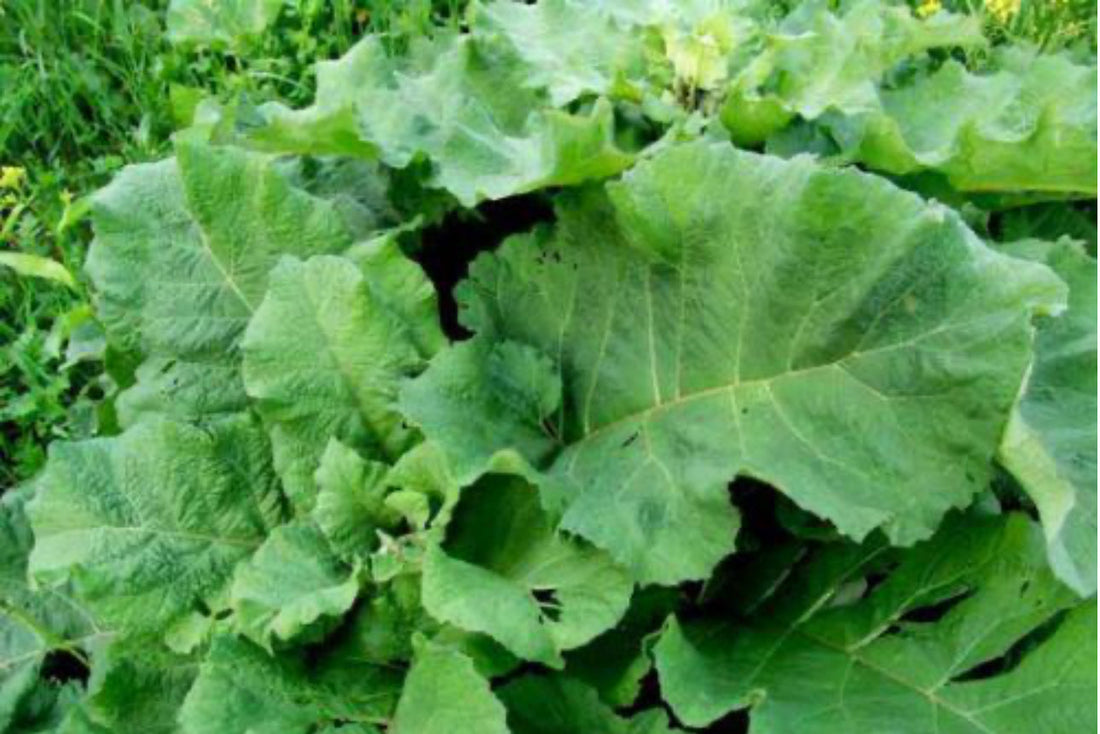
Burdock: The Quiet Healer Rooted in Tradition
I still remember the first time I held a piece of burdock in my hand—broad green leaves just picked from the garden, still cool with morning dew. My grandmother smiled and said, “These early summer greens are pure strength—juice them fresh, and you’ve got a tonic like no other.”
She would always harvest the young leaves at the beginning of summer, when they were most tender and full of life. Into the juicer they went—deep green, slightly bitter, but bursting with nutrition. That was her way of giving the body a fresh start: vitamin-rich, mineral-packed, straight from the earth.
Then, as the seasons turned and the days grew heavier with heat, she’d prepare for the second phase—late summer burdock root foraging. That was a slower, grounding task. Digging through the soil, carefully pulling up the roots, drying or boiling them to make a deep, nourishing tea.
Years later, as an herbalist, I find myself following the same rhythm—early summer for the leaves, late summer for the roots. And always with a quiet respect for what this plant offers: strength, resilience, and deep nourishment.
What Makes Burdock So Special?
Burdock isn’t flashy, but it’s incredibly rich. This humble plant gives us so much—above ground and below.
Its young green leaves are packed with:
-
Vitamins A, B, C, E, P and chlorophyll
-
Light bitterness that supports digestion and detox pathways
-
Fresh enzymes and antioxidants best preserved when juiced raw
Its roots, harvested later in the season, offer:
-
Inulin, a prebiotic that feeds healthy gut flora
-
Alkaloids, known for their anti-inflammatory and protective activity
-
Minerals like iron, calcium, zinc, selenium, chromium, and magnesium
-
Fatty acids, plant-based proteins, and deeply grounding energy
Together, they form a complete cycle of nourishment—from light, cleansing greens to deep, stabilizing roots.
Burdock as Wartime Nourishment
During World War II, when food was scarce in many Eastern European countries, people turned to the land for survival. Burdock became more than medicine—it became food.
In some villages, burdock root was used as a substitute for potatoes, boiled or roasted to stretch meals and nourish families. Its starchy texture made it a practical, if humble, choice—and for many, it was the difference between hunger and survival.
For those who lived through it, burdock remains a symbol of endurance and care—the kind that grows wild when everything else is stripped away.
How Burdock Helps the Body
My grandmother would boil the root into a strong tea when someone wasn’t feeling well. Today, I know burdock juice and tea are used for much more than just “feeling under the weather.” Here’s what it’s known to support:
-
Digestive health, including gastritis, ulcers, and general sluggishness
-
Pancreatic function, especially helpful in blood sugar regulation
-
Liver and kidney detox, supporting the body’s natural filtration
-
Skin clarity, especially with eczema, breakouts, or allergic reactions
-
Joint comfort, often used in cases of rheumatism or arthritis
-
Urinary health, encouraging natural elimination of uric acid
-
Energy levels, thanks to its dense nutritional profile
-
And most of all—for gentle, full-body cleansing over time
My Favorite Way to Use It
In early summer, I like to juice the leaves—just a small amount blended with apple or lemon. It’s earthy, slightly bitter, and instantly energizing. Later in the season, I brew the dried root slowly, letting the scent fill the kitchen as it simmers. A cup of that, a candle lit, and everything feels a little more grounded.
At Healing Minty Way, we love weaving both the leaf and root into our offerings. There’s something beautiful in using a plant through its full life—following its seasons, its strengths, its quiet wisdom.
Let the roots and leaves remind you: Healing isn’t always loud. Sometimes, it’s seasonal. Subtle. And beautifully slow—just like a cup of burdock tea or juice from its first summer leaves.
